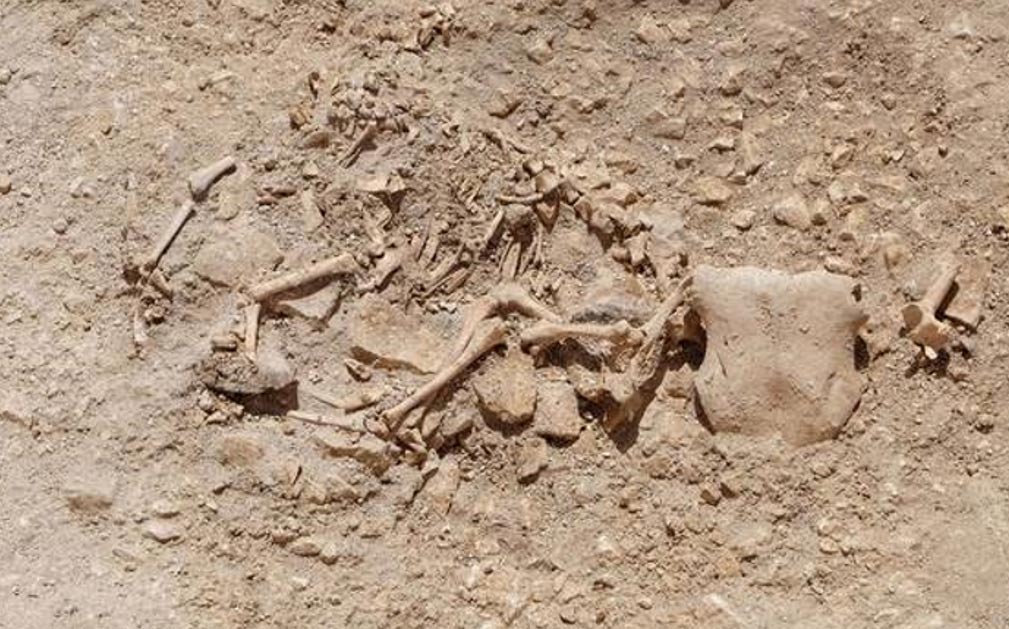The Celtic inhabitants of a small, industrious Iron Age settlement in Dorset, England, are believed to have sacrificed a young woman by slitting her throat, before burying her body in a curious arrangement of bones. Archaeologists also unearthed a series of bizarre hybrid-animals, in which the bones of different animals were intentionally combined together in what is reminiscent of the mythological beasts of ancient cultures.
The burials of hybrid animal bones at the site recall myths from the Mediterranean and Near East about bird-woman harpies, goat-lion chimeras, eagle-lion griffins, man-goat satyrs, man-bull minotaurs and man-horse centaurs.
Ancient peoples imagined combining various animal and/or human parts into one fantastic and sometimes grotesque beast. Some were understood as monsters, others as wise counselors or guardians of shepherds and the countryside.
One particularly bizarre arrangement of animal bones also involved a human skeleton,” reports The Independent. “A young woman appears to have been sacrificed (there was an indication that her throat had probably been slit) – and was then buried on a ‘bed’ of specially arranged cattle, sheep, dog and horse bones. Significantly these animal bones had been deliberately sorted to mirror the bones of the dead woman. The animals’ skull fragments formed the surface her head rested on, while the animals’ leg bones formed the surface her legs rested on.”
Using geophysical and other scientific dating methods, the archaeologists, led by Miles Russell and Paul Cheetham, determined the community was inhabited from about 100 BC to 10 BC. The Celtic settlement consisted of 150 to 200 round houses. The people, possibly of the Durotriges tribe, engaged in a variety of industries, including pottery making, textile manufacturing and working of iron, lead and copper. The excavations are going on at North West Farm near Winterborne Kingston, Dorset, a 32,000 square meter (7.9-acre) archaeological site. According to classical sources, the ancient Celts were animists who honored the forces of nature and believed that certain animals were messengers of the spirits or gods.
The discoveries are helping to transform our understanding of key aspects of Late Iron Age Britain – the type of society that existed just a couple of generations before the Roman conquest,” said Russell. “Our investigations at the site suggest that life there was peaceful and prosperous. Although the settlement was relatively large, there appears to have been no defensive palisade or ramparts. The sacrifice of so many animals and the unusual treatment of their bones is likely to shed totally new light on Iron Age belief systems – and may suggest that the Ancient Britons had beliefs or mythologies which involved hybridized animals, just as the ancient Greeks had.”
The hybridized animal forms found at the site include a cow that was apparently sacrificed and then had its legs replaced by horse's legs; a sacrificed sheep with its own head plus a bull's head on its rear end; a horse with cow's horns placed in an inward direction on its head; and a cow leg with a horse's hoof.
“As well as these potential hybrid-style skeletal re-arrangement, the archaeologists … have discovered a series of ‘mix and match’ pairings of different animals and animal parts,” reports The Independent. “They have so far found two examples in which a jawless cow skull had been deliberately paired with a horse’s lower jaw. Another find was a complete dog with three cow lower jaws radiating from it. Other ritual burials of animals discovered at the site include five additional horse heads, 15 more cow heads, three complete pigs and three more complete dogs.”
Most of these sacrificed and combined animals were in storage pits under entrances to the ancient houses on the site. The sacrifices appear to have been made in the late first century BC, possibly as decommissioning rituals done as the homes and settlement were being abandoned, The Independent says.
The researchers intend to study findings from other Iron Age Celtic sites in Western Europe and Britain and compare it to what is known about Celtic mythology to try to understand more about this ancient people's belief systems.
Featured image: A sheep with its own head that was fragmentary plus the head of a bull on its rear end has been excavated along with other animal combinations at a farm in Dorset, England.
By Mark Miller
Read more: http://www.ancient-origins.net/news-history-archaeology/excavation-reveals-bizarre-celtic-burial-hybrid-animal-bone-arrangements-020432#ixzz3fukmjXQ4
Follow us: @ancientorigins on Twitter | ancientoriginsweb on Facebook





0 Comentarios